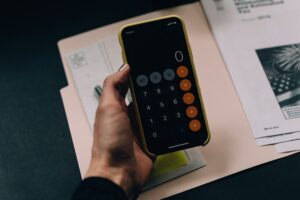Forex Demo Trading vs. Live Trading: What You Need to Know
When it comes to forex trading, practice is key. Many novice traders start their forex journey by opening a demo account. A demo account allows traders to practice and familiarize themselves with the trading platform without risking real money. While demo trading is an essential step for beginners, it is important to understand the differences between demo trading and live trading. In this article, we will explore the pros and cons of both and what you need to know before making the transition from demo to live trading.
Demo Trading: A Safe Environment to Learn and Practice
Demo trading is a simulated trading environment that mimics real-time market conditions. It is an excellent tool for beginners to learn the basics of forex trading, test different strategies, and understand how the market works without the fear of losing money. Here are some advantages of demo trading:
1. Risk-free Environment: One of the biggest advantages of demo trading is that it allows traders to practice without risking real money. This creates a stress-free environment where traders can experiment with different strategies and learn from their mistakes without incurring any financial loss.
2. Familiarization with Trading Platforms: Forex trading platforms can be complex and overwhelming for beginners. Demo accounts provide traders with an opportunity to get familiar with the trading platform, understand its functionalities, and practice executing trades.
3. Testing Strategies: Demo trading allows traders to test different trading strategies and techniques. It helps traders identify what works for them and what doesn’t. This is crucial for developing a profitable trading plan.
4. Real-time Market Conditions: Demo accounts provide traders with access to real-time market data, allowing them to experience market movements and volatility firsthand. This helps traders understand how different economic events and news impact currency pairs.
Despite the numerous benefits, demo trading does have its limitations. The main drawback is the lack of emotional involvement. Since traders are not risking real money, they may not experience the same emotions and psychological pressure as in live trading. This can lead to unrealistic expectations and overconfidence.
Live Trading: The Real Deal
Once traders have gained confidence and have a profitable trading plan in place, they may decide to transition to live trading. Live trading involves real money, real risk, and real emotions. Here are some key points to consider before making the switch:
1. Emotional Rollercoaster: Live trading involves real money, and with real money comes emotions. Fear, greed, and anxiety can significantly impact trading decisions. It is important to be mentally prepared to handle these emotions and remain disciplined in following your trading plan.
2. Risk Management: In live trading, money is at stake. Traders need to have a solid risk management strategy in place to protect their capital. This includes setting stop-loss orders, position sizing, and managing leverage.
3. Execution Speed: In demo trading, trade execution is usually instantaneous. However, in live trading, there can be delays due to market liquidity, internet connection, or technical issues. Traders need to be prepared for potential execution delays and adjust their strategies accordingly.
4. Market Impact: As a retail trader, your trades may not have a significant impact on the market. However, in live trading, large positions can potentially move the market. Traders need to be aware of this and consider the impact of their trades on liquidity and price movements.
5. Realistic Expectations: It is important to set realistic expectations for live trading. Not every trade will be profitable, and losses are a part of trading. Traders need to have a long-term perspective and focus on consistent profitability rather than short-term gains.
Conclusion
Demo trading is an essential step for beginners to learn and practice forex trading. It provides a risk-free environment to understand the market, test strategies, and get familiar with trading platforms. However, it is important to recognize the limitations of demo trading and understand the differences between demo and live trading.
Live trading involves real money, emotions, and real risk. Traders need to be mentally prepared, have a solid risk management strategy, and set realistic expectations. Transitioning from demo to live trading requires careful planning, continuous learning, and the ability to manage emotions effectively. By understanding the nuances of both demo and live trading, traders can develop the skills and confidence needed to succeed in the forex market.






